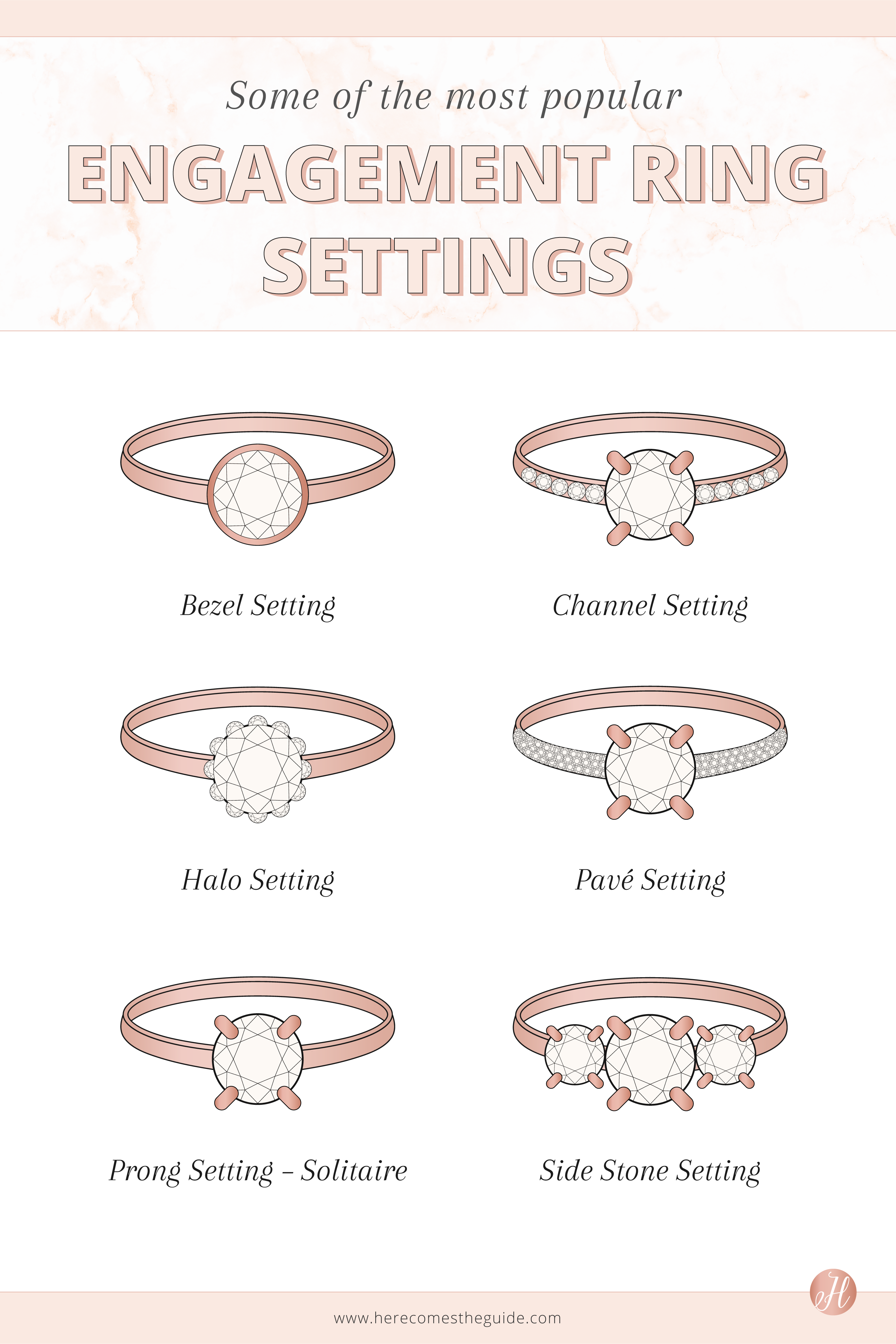
Selecting an engagement ring is a momentous occasion in any relationship. It marks the beginning of a lifelong journey and signifies commitment, love, and devotion. With so many options available, it can feel overwhelming to choose the perfect symbol of love that will last for generations. Whether you’re just starting the process or already have a few ideas, this guide will provide all the information you need to make an informed decision.
Understanding the Significance of an Engagement Ring
An engagement ring is not merely a piece of jewelry; it is a meaningful token of your love and future together. Traditionally, it symbolizes a promise of marriage, representing the eternal nature of love with its circular shape. Over time, engagement rings have evolved from simple designs to intricate masterpieces, with various styles and gemstones representing the unique tastes and preferences of couples.
Before diving into the selection process, it’s essential to understand the significance of an engagement ring. A well-chosen ring serves as a constant reminder of the bond between two people and carries emotional and symbolic weight that goes beyond its monetary value.
The Four Cs of Diamonds: Cut, Clarity, Color, and Carat Weight
When it comes to engagement rings, diamonds are a popular choice for their timeless beauty and durability. To make an informed decision, it is crucial to understand the “Four Cs” of diamonds. These factors play a significant role in determining the quality and value of a diamond, and knowing them will help you choose the best one for your ring.
1. Cut
The cut of a diamond refers to how well it has been shaped and faceted. This aspect affects the diamond’s brilliance and sparkle. A well-cut diamond reflects light beautifully, giving it a stunning shine. The cut is often considered the most important factor when evaluating a diamond, as it can make a significant impact on its overall appearance.
2. Clarity
Clarity measures the presence of any imperfections or inclusions within the diamond. Most diamonds contain minor flaws, but the fewer imperfections, the higher the clarity grade. The clearer the diamond, the more valuable it is. However, many small imperfections are invisible to the naked eye, so focusing on clarity is a matter of personal preference.
3. Color
Diamonds come in a range of colors, from colorless to shades of yellow or brown. The less color a diamond has, the more valuable it is. Color is graded on a scale from D (colorless) to Z (light yellow or brown). For engagement rings, many people prefer a colorless or near-colorless diamond to ensure the stone’s brilliance shines through.
4. Carat Weight
Carat weight refers to the size of the diamond. One carat equals 0.2 grams, and as the carat weight increases, so does the price. However, carat weight is not the only determinant of a diamond’s beauty. A smaller diamond with an excellent cut can be more captivating than a larger, poorly cut diamond. Carat weight should be considered alongside the other Cs to ensure you find the perfect balance between size, quality, and price.
Choosing the Right Metal for Your Engagement Ring
Once you’ve decided on the perfect diamond, the next step is selecting the metal for the band. The choice of metal can greatly affect the overall look of the ring, and different metals offer unique benefits. Here are some popular options:
Platinum
Platinum is one of the most durable and prestigious metals, making it an ideal choice for engagement rings. It has a sleek, white sheen and is hypoallergenic, making it a great option for those with sensitive skin. Platinum’s heavy weight and resistance to tarnish ensure that it will last for generations.
White Gold
White gold is a popular alternative to platinum, offering a similar look at a more affordable price. It is alloyed with other metals, such as palladium, to achieve its white color. White gold is often coated with rhodium to enhance its shine, but this coating may need to be reapplied over time to maintain its luster.
Yellow Gold
Yellow gold is a classic choice for engagement rings, with its warm, timeless appeal. It’s often associated with traditional and vintage designs and has been a symbol of love for centuries. Yellow gold is available in 14k, 18k, and 22k options, with higher karat gold containing a higher percentage of pure gold.
Rose Gold
For those looking for something unique, rose gold offers a romantic and distinctive appearance. Its pinkish hue is created by alloying gold with copper, giving it a soft, vintage feel. Rose gold is a popular choice for those seeking a more unconventional engagement ring.
Silver
Silver is an affordable option that is often used for alternative engagement rings. While not as durable as gold or platinum, silver offers a shiny and elegant look. It may require more maintenance due to tarnishing, but it remains a beautiful and budget-friendly option.
Exploring Engagement Ring Styles
Engagement rings come in a variety of styles, each with its own distinct look and appeal. The design you choose should reflect your partner’s personality and style, as well as the uniqueness of your relationship. Here are some of the most popular engagement ring styles:
Solitaire
The solitaire ring features a single diamond or gemstone as the focal point. This style is timeless and elegant, allowing the center stone to take center stage. It’s ideal for those who appreciate minimalist beauty and want the diamond to shine without distraction.
Halo
A halo engagement ring features a central diamond surrounded by a “halo” of smaller diamonds or gemstones. This style enhances the appearance of the center stone, making it look larger and more dazzling. Halo rings are perfect for those who want a bit of extra sparkle and visual impact.
Three-Stone
The three-stone ring represents the past, present, and future of a relationship. With a large center stone flanked by two smaller stones, this style symbolizes a journey together. It’s a meaningful and romantic choice for couples who want a design with symbolic significance.
Vintage
Vintage engagement rings are characterized by intricate details, such as filigree, milgrain edges, and antique-inspired settings. These rings often feature a combination of different metals and stones, creating a rich, timeless look. Vintage rings are perfect for those who appreciate history and want a ring with character and charm.
Modern
For those who prefer contemporary designs, modern engagement rings offer sleek, clean lines and innovative settings. These rings often feature unusual gemstones, geometric shapes, or unconventional designs that make a bold statement.
Budgeting for Your Engagement Ring
When choosing an engagement ring, it’s important to set a realistic budget. The cost of the ring can vary greatly depending on the metal, diamond, and design you choose. The traditional “two months’ salary” rule is often cited, but it’s important to remember that this is just a guideline, not a strict requirement.
By understanding the factors that influence the price, such as the diamond’s quality, the metal’s cost, and the complexity of the design, you can make an informed decision that fits within your budget. Don’t forget to factor in additional costs, such as insurance and resizing, which may be necessary after the purchase.
Conclusion
Choosing the perfect engagement ring is a significant and deeply personal decision. It requires careful consideration of the diamond’s quality, the ring’s design, and the metal that best suits your style and preferences. By understanding the essential elements of an engagement ring, you can select a symbol of love that represents your unique relationship and will stand the test of time. Whether you choose a classic solitaire, a glamorous halo, or a vintage-inspired design, the perfect ring will serve as a lasting reminder of your love and commitment.
